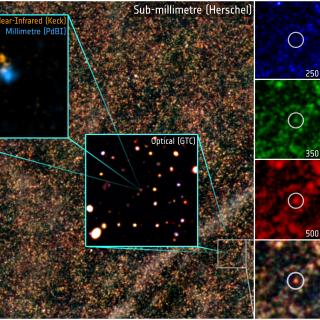Bibcode
Hagimoto, M.; Bakx, T. J. L. C.; Serjeant, S.; Bendo, G. J.; Urquhart, S. A.; Eales, S.; Harrington, K. C.; Tamura, Y.; Umehata, H.; Berta, S.; Cooray, A. R.; Cox, P.; De Zotti, G.; Lehnert, M. D.; Riechers, D. A.; Scott, D.; Temi, P.; van der Werf, P. P.; Yang, C.; Amvrosiadis, A.; Andreani, P. M.; Baker, A. J.; Beelen, A.; Borsato, E.; Buat, V.; Butler, K. M.; Dannerbauer, H.; Dunne, L.; Dye, S.; Enia, A. F. M.; Fan, L.; Gavazzi, R.; González-Nuevo, J.; Harris, A. I.; Herrera, C. N.; Hughes, D. H.; Ismail, D.; Ivison, R. J.; Jones, B.; Kohno, K.; Krips, M.; Lagache, G.; Marchetti, L.; Massardi, M.; Messias, H.; Negrello, M.; Neri, R.; Omont, A.; Perez-Fournon, I.; Sedgwick, C.; Smith, M. W. L.; Stanley, F.; Verma, A.; Vlahakis, C.; Ward, B.; Weiner, C.; Weiß, A.; Young, A. J.
Referencia bibliográfica
Monthly Notices of the Royal Astronomical Society
Fecha de publicación:
6
2023
Número de citas
29
Número de citas referidas
22
Descripción
We analyse the molecular and atomic emission lines of 71 bright Herschel-selected galaxies between redshifts 1.4 and 4.6 detected by the Atacama Large Millimeter/submillimeter Array. These lines include a total of 156 CO, [C I], and H2O emission lines. For 46 galaxies, we detect two transitions of CO lines, and for these galaxies we find gas properties similar to those of other dusty star-forming galaxy (DSFG) samples. A comparison to photodissociation models suggests that most of Herschel-selected galaxies have similar interstellar medium conditions as local infrared-luminous galaxies and high-redshift DSFGs, although with denser gas and more intense far-ultraviolet radiation fields than normal star-forming galaxies. The line luminosities agree with the luminosity scaling relations across five orders of magnitude, although the star formation and gas surface density distributions (i.e. Schmidt-Kennicutt relation) suggest a different star formation phase in our galaxies (and other DSFGs) compared to local and low-redshift gas-rich, normal star-forming systems. The gas-to-dust ratios of these galaxies are similar to Milky Way values, with no apparent redshift evolution. Four of 46 sources appear to have CO line ratios in excess of the expected maximum (thermalized) profile, suggesting a rare phase in the evolution of DSFGs. Finally, we create a deep stacked spectrum over a wide rest-frame frequency (220-890 GHz) that reveals faint transitions from HCN and CH, in line with previous stacking experiments.
Proyectos relacionados

Formación y Evolución de Galaxias: Observaciones Infrarrojas y en otras Longitudes de Onda
Este grupo desarrolla varios proyectos extragalácticos en diferentes rangos del espectro electromagnético utilizando satélites y telescopios en tierra para estudiar la evolución cosmológica de las galaxias y el origen de la actividad nuclear en galaxias activas. En el aspecto instrumental, el grupo forma parte del consorcio internacional que ha
Ismael
Pérez Fournon

Gas Molecular y Polvo en Galacias através del Tiempo Cósmico
Dos cuestiones fundamentales en la Astrofísica son la conversión de gas molecuar en estrellas y cómo este proceso físico depende del entorno en todas las escalas, desde sistemas planetarios, cúmulos estelares, galaxias hasta cúmulos de galaxias. El objectivo principal de este proyecto es el de estudiar la formación y evolución de galaxias a partir
Helmut
Dannerbauer